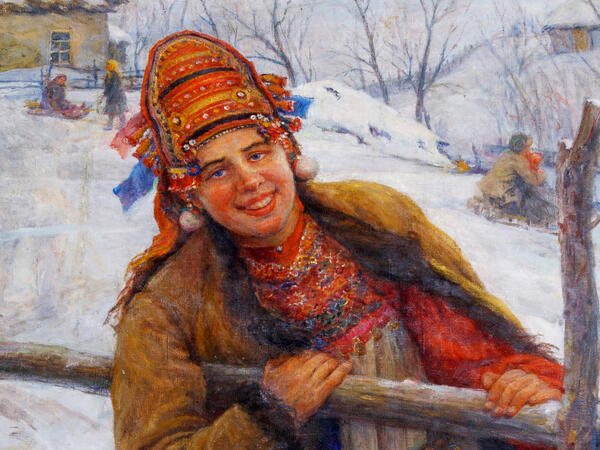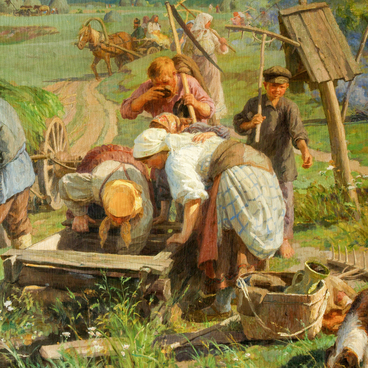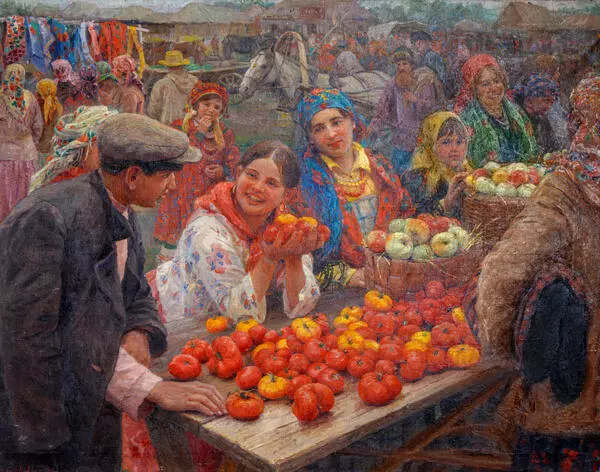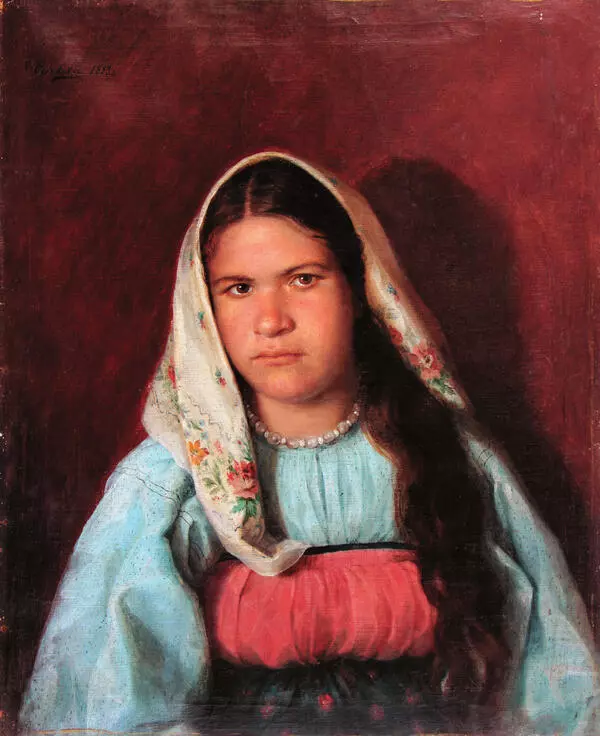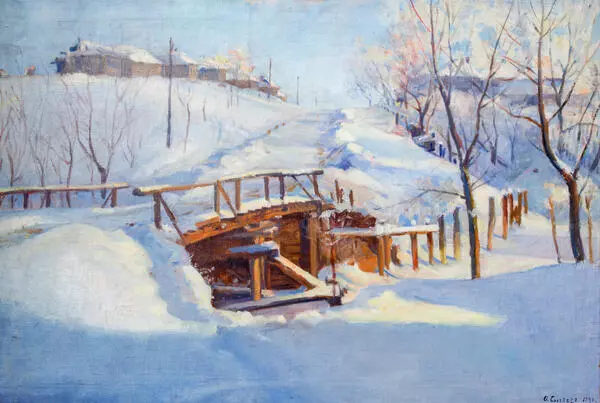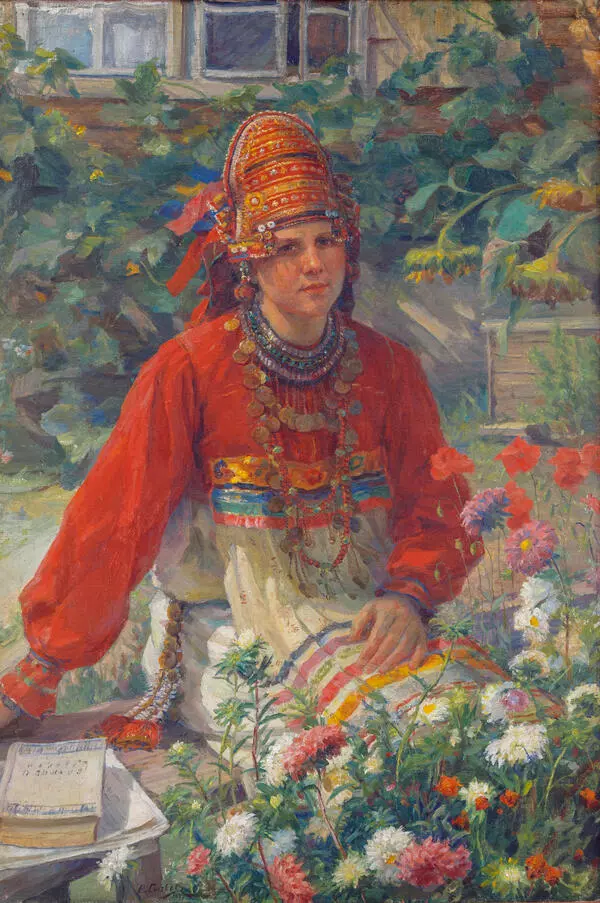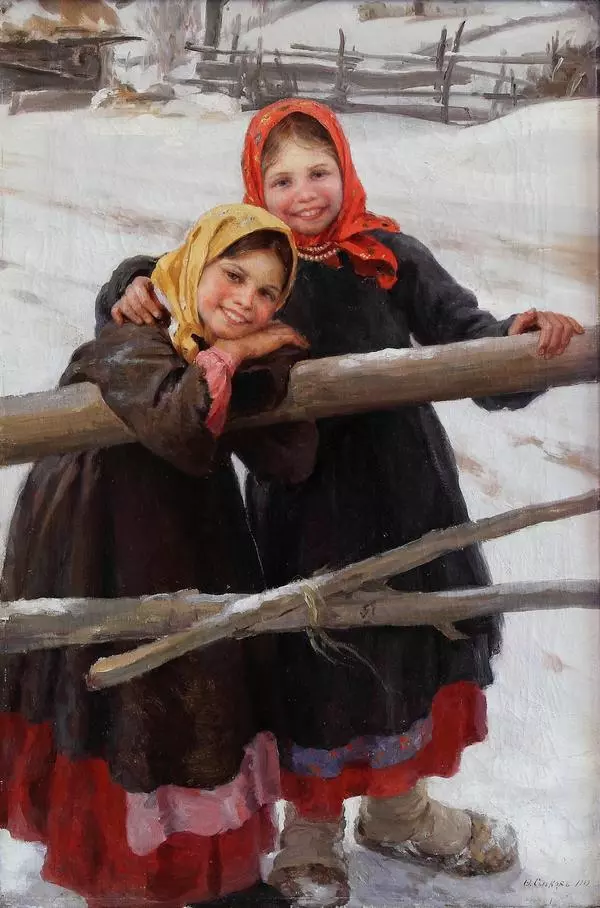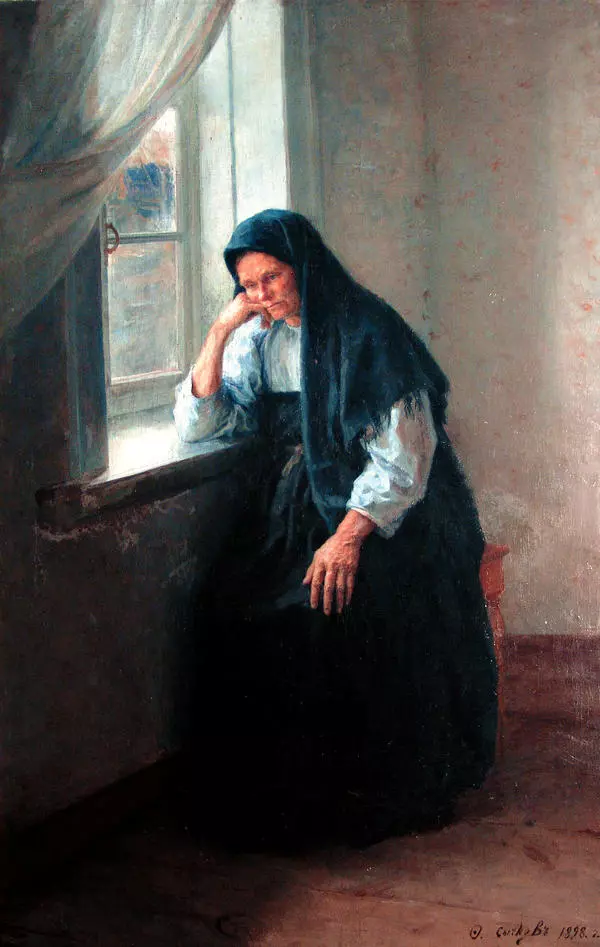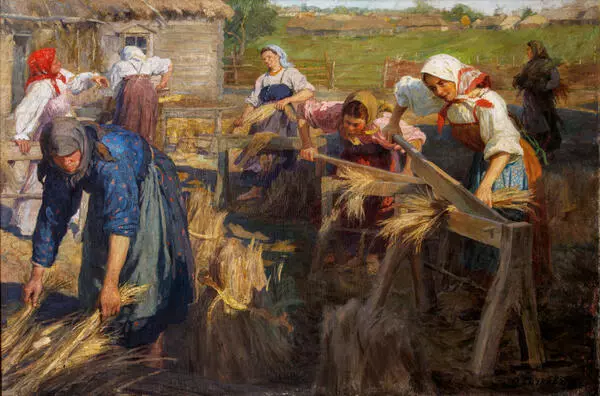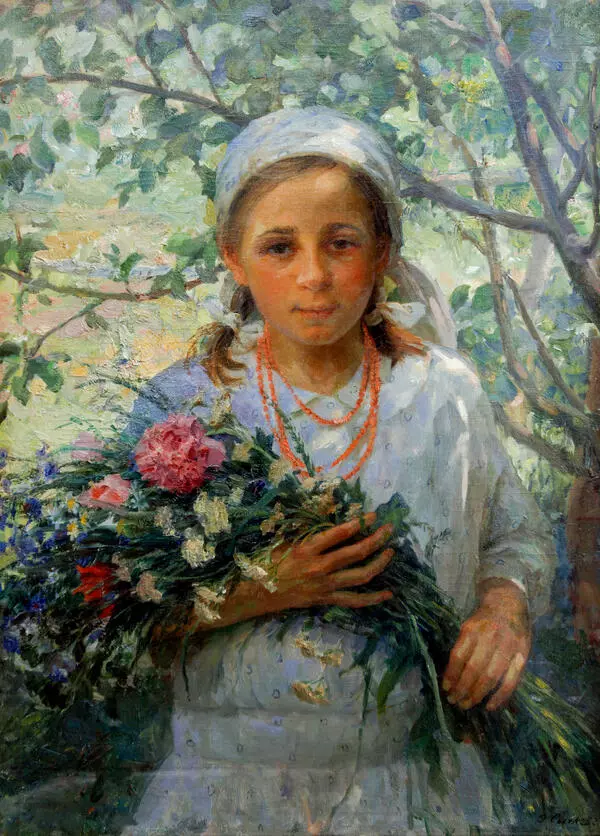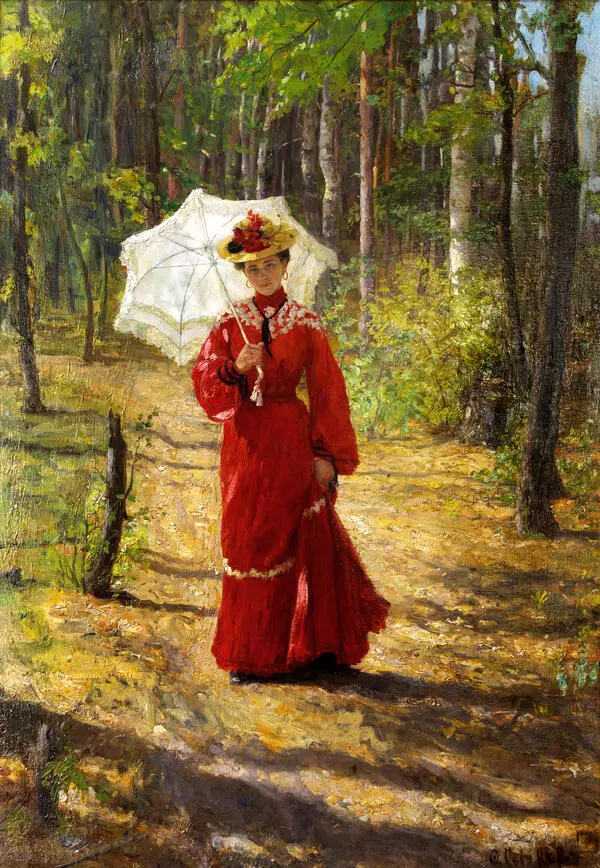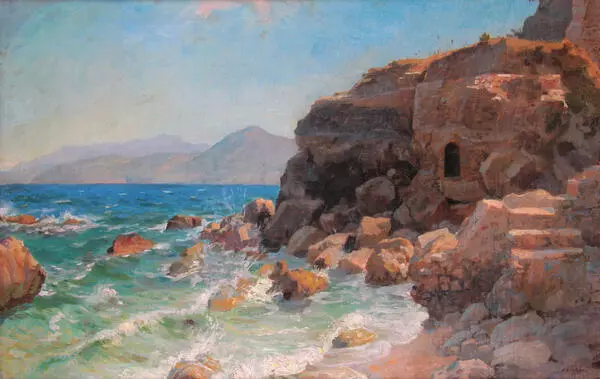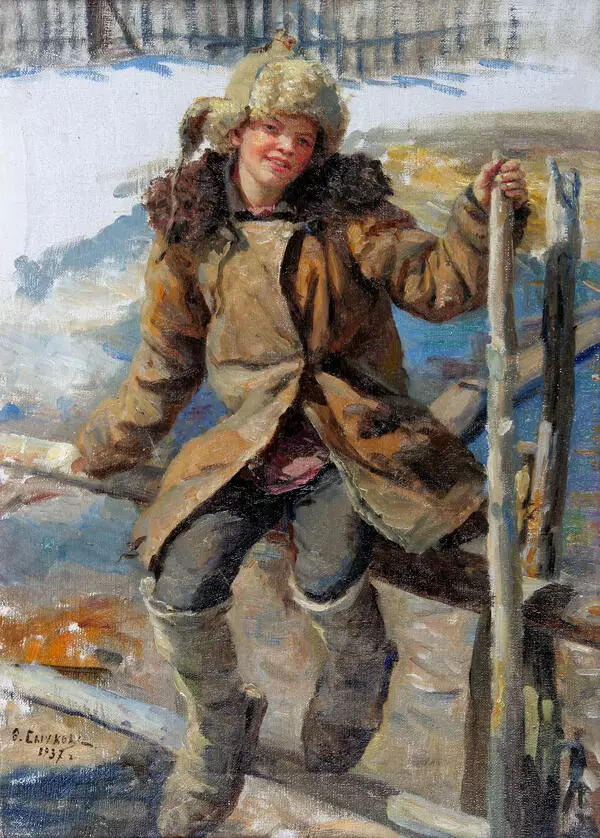‘Portrait of an Erzia Woman’ is one of the last paintings of the artist, dedicated to the national Mordovian women costume. He portrayed not so much a specific person, but a generalized image of an Erzia woman, a representative of one of the Mordovian ethnic groups. She is in her traditional clothes: a headdress ‘shlygan’ and a richly decorated dress. She has a short sheepskin coat on the top of the costume.
The artist depicted his heroine in the well-known to him winter landscape of Kochelayevo: children in sleds roll down a hill, a part of a white church can be seen on the horizon behind the snow-covered izbas in front of a narrow strip of bright sky.
To make the painting natural, Fedot Sychkov used his favorite composition scheme ‘by the fence’: the girl leans on a horizontal pole. The heroine seems to have stopped for a while to chat with the person who called her, and this person is the viewer, to whom her friendly smile is addressed.
In such paintings, the artist meticulously depicted the outfits. He collected parts of traditional Moksha and Erzia garments, and if he was not able to buy the original ones, he made sketches writing down the colors and the details. Probably, he was not able to buy the whole Moksha or Erzia costume, so he painted the heroine’s costume using different parts from his collection.
In a letter to artist Nikolay Kamenshchikov, the painter admitted that even though he was born Russian, he very much liked Mordovian history and their national costumes:
The artist depicted his heroine in the well-known to him winter landscape of Kochelayevo: children in sleds roll down a hill, a part of a white church can be seen on the horizon behind the snow-covered izbas in front of a narrow strip of bright sky.
To make the painting natural, Fedot Sychkov used his favorite composition scheme ‘by the fence’: the girl leans on a horizontal pole. The heroine seems to have stopped for a while to chat with the person who called her, and this person is the viewer, to whom her friendly smile is addressed.
In such paintings, the artist meticulously depicted the outfits. He collected parts of traditional Moksha and Erzia garments, and if he was not able to buy the original ones, he made sketches writing down the colors and the details. Probably, he was not able to buy the whole Moksha or Erzia costume, so he painted the heroine’s costume using different parts from his collection.
In a letter to artist Nikolay Kamenshchikov, the painter admitted that even though he was born Russian, he very much liked Mordovian history and their national costumes:

